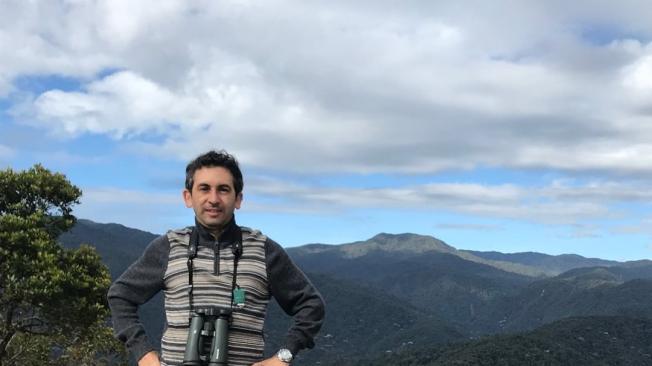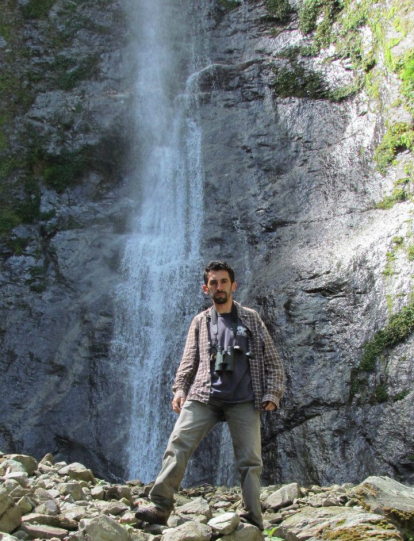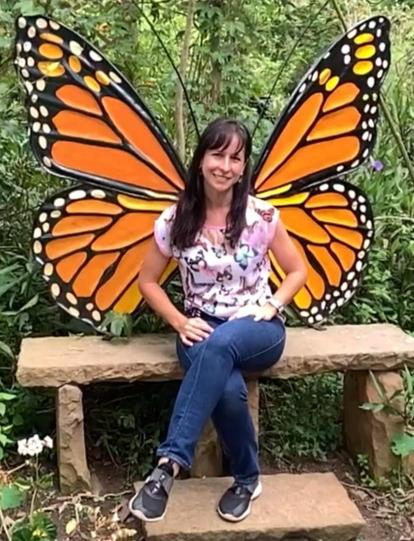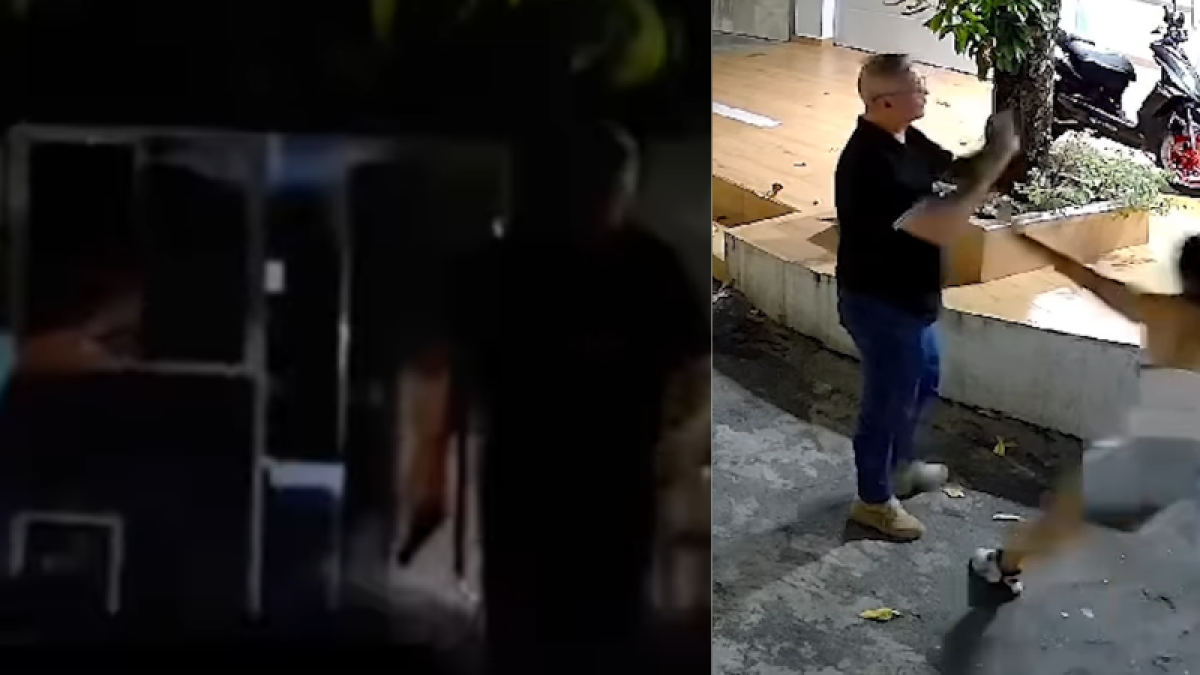After leaving the hustle and bustle of Cali, the first wooden houses appear in the middle of a road that winds through the mountains towards Buenaventura. Tropical music from a radio station livens up the journey. "We're here!" shouts the bus driver, signalling the start of the descent. The road leads to the meeting point known as 'brujitas' (little witches).
Conforme a los criterios de

(Lea esta historia en español, aquí)
The aim is to find the mythical basins of the rivers San Cipriano and Escalerete, whose main inhabitants are snakes, sloths, frogs, toucans, butterflies, dragonflies, the paletón, the gallito cabecinegrosa, turtles and a great variety of fish such as the sabaleta, the muchillá shrimp, guabinas, mojarra, corroncho, among others.
The 'brujitas' are the local means of transport: motorcycles with mechanical modifications that can travel on an old railway line.
While waiting for one of them, a woman greets dozens of people and tells a fantastic story that seems to have been taken out of a book. She is Lida Riascos, one of the local leaders who defend the region's biodiversity on a daily basis.
She explains that San Cipriano was declared a protected area in 1979 because of the diversity of its forests and fauna. She points out that it was only a few decades later that the community came together to consolidate an ecologically sustainable way of life: wooden houses became lodges, training in ecological conservation and several young people became forest rangers to protect the reserve. Like theirs, there are many stories of those who struggle daily to protect the environment and provide solutions to the economic structure of households in the department.

Francisco Gómez Barreiro.
Foto:Francisco Gómez
The man who follows the Andean bear
He is dedicated to proposing ways to protect ecosystems. Francisco Gómez Barreiro, from Palmira, has been working for 21 years to protect the Amaime and Nima river basins.
Throughout his life he has travelled through swamps, forests, lagoons and a subxerophytic enclave, an arid, low-moisture ecosystem - one of three in the entire region - that looks like a desert in the heart of the Cauca Valley. Over time, his main focus became tracking the Andean bear, which can live up to 3,500 metres above sea level. "The farmers have seen them," he says.
He is president of the Ambiente Colombia Foundation and knows a lot about the Nima Regional Natural Park, which has 355 hectares of Andean forest, 1,715 of sub-Andean forest, 937 of paramos and 127 water springs. "There are baquianos who have photographed the bear in this high part," he continues. Gómez, who knows the Amaime River from top to bottom, works with the community every day to conserve the reserve's wildlife and ecosystems. "It has been accepted by the farmers to promote team processes; it is to seek the welfare of all those who profess to love the water and the land and who have felt very lonely," he says.
One of his hopes is that the state and the leaders coming to COP16 will make a real commitment to the environment.

Carlos Mario Wagner-Wagner.
Foto:Carlos Mario Wagner-Wagner
The master of bird photography
A birdwatcher reveals the magic of these animals. Patience was the key for Carlos Mario Wagner-Wagner from Cali to find, after several years, a golden-headed bird whose body in the shadow of the sea had been revealing itself to him since he was a teenager: the multicoloured tanager.

Carlos Mario Wagner-Wagner.
Foto:Carlos Mario Wagner-Wagner
"It was a male and it lasted four seconds," he recalls. But he didn't have to go far. Less than half an hour from downtown Cali are the 900 hectares of the San Antonio cloud forest, which borders his family's home high in the Cali river basin and where the zookeeper usually goes to watch the birds.
This is why his heart beats for birdwatching, a vocation that began as a child when he used to walk through the mountains of the village of El Saladito. His fascination lies in the hours he spends admiringly observing and photographing these animals - he has pictures of more than 500 species out of the more than a thousand he has seen in his life, and several have been published in international media such as National Geographic. He says he does this to be inspired and to show the world the richness of nature so that it can be protected and preserved. Over the past decade, she has worked on research projects in the Chocó, the Cordilleras and the Farallones de Cali National Park.
Women nurture the life cycle of native butterflies
The country is home to 20% of the planet's species. One green business is trying to preserve them.

Vanessa Wilches.
Foto:Vanessa Wilches
Patricia Restrepo and her daughter Vanessa Wilches were inspired to create a butterfly garden for the public to admire the beauty of butterflies imported from tropical areas, similar to those that fly in the mountains of Palmira.
His family's vocation to help the rural community and protect the natural wealth of the area where his farm was located was the impetus for the creation of Alas de Colombia, Mariposas Nativas, incorporated as a company on 24 September 2001. Its aim is to breed and conserve butterflies and to offer the inhabitants of El Arenillo, less than an hour from Cali, an alternative for sustainable development. Vanessa Wilches explains that the breeding is done with pairs of each species taken from the wild. The parents lay their eggs on species-specific host plants, where the larvae feed.
The eggs are collected daily and taken to a laboratory where they are given the food and care they need to metamorphose into pupae or chrysalises (the stage before the imago or adult) and then into butterflies. And he assures that this process includes the care of the surrounding flora, which has implications for the conservation of the forests.
CAROLINA BOHÓRQUEZ
EL TIEMPO correspondent
Cali
Editor's note: This text is an artificially intelligent English translation of the original Spanish version, which can be found here. Any comment, please write to berdav@eltiempo.com

.png) hace 2 meses
24
hace 2 meses
24








 English (US) ·
English (US) ·  Spanish (CO) ·
Spanish (CO) ·